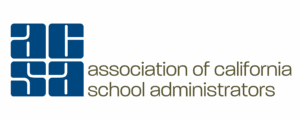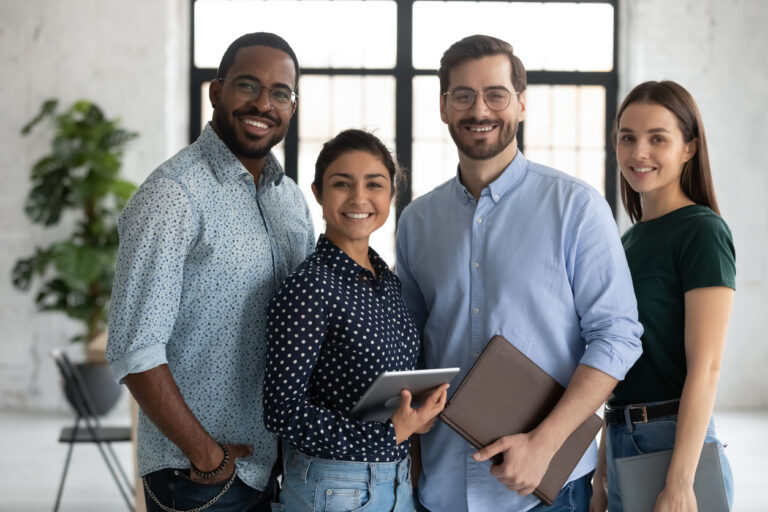Navigating societal expectations of Black women administrators in public schools
By Ayanna Balogun, Ed.D.
Full Disclaimer: This is an article written from my perspective as a Black female educator, with over 28 years in the public education system, a sister-gurl circle member, a doctorate in Educational Justice, a community advocate, a researcher, a parent, and a wife of a black male teacher. These are my truths that I offer seeking two things:
- Joy, hope and healing for my fellow Black female leaders.
- Insight for others reading, so that they are aware, have an opportunity to build empathy and understand my perspective of intersectionality within so-called “safe” spaces.
Being a Black female leader in educational spaces is not a monolithic view and I am not the spokesperson for all Black female public school leaders. I merely submit my perspective from years of belonging and navigating while participating in thousands of conversations with my sister “gurl” colleagues.
The beginning
Bachelor’s degree — check!
Teaching credential — check!
Teaching experience — check!
Administration degree and credential — check!
Administrator experience — check!
With all the boxes checked, Black females in education should feel like they are ready, confident and qualified to lead. However, in some cases, there are conditions and lingering thoughts that can creep in as we begin our journey: Racism, impact of Intersectionality and imposter syndrome.
Let’s start from the beginning with our motive of going into leadership. In the purest sense, most of us enter the space because we have the notion that we can’t complain or criticize existing leadership if we don’t jump in and assist. Most of us also feel like we need to be the change “agent” we want to see in the world. And at the most basic level, we want to be the representation that our parents, community and children lack seeing in most public systems.
Most of our journeys begin with the most innocent and selfless purpose: to help others. It is not the pay, not the title, not the meetings, and for sure not for prestige. We enter bravely willing to make change and make our communities better. Then reality hits.
Racism
Public school systems have traditionally underserved populations for years dating back to Brown vs. Board of Education in Topeka Kansas. Black communities wanted access and opportunities afforded to Black children as they were afforded to white communities. The answer: Integration. Keep in mind that because of integration, many Black teachers lost their jobs in their communities, but let’s put a pin in that. These desires for equal opportunities, despite the “separate but equal” laws, were mitigated by Black children being bused into hostile environments that were never designed or curated for them.
Broadening the scope of the space, racism also exists within the structures of school systems and the adults that work for that system. From curriculum choice, hiring practices, service providers, specialized departments — racism plays an important factor in the landscape. Just a basic fact of 8o percent of the teachers in the U.S. are white servicing predominant Black and Brown communities. Black women are afraid of erasure and the feeling of being invisible in our system.
Racism is not the focus of this article, but I wanted to provide a backdrop of understanding the difficulty in the navigation for leading while being a Black female.
Intersectionality
According to leading scholar Kimberly Crenshaw, Intersectionality describes the notion that we, Black women, enter spaces with many identities that have equal importance and equal value.
Being Black in America is a different experience than being white or Latino. Being a woman in America is a different experience than being a man. Being a Black woman in America is a different experience than being a Black man. Being a Black woman in the school system is a different experience than being a white woman. Yet, at the crux of it all, these identities intersect and make for a very unique experience than each individual identity. With every decision made by us or decision made that impacts us, in the back of our minds, the question taunts us: Did that happen because I am Black or because I am a female or because I am a Black female?
White women administrators may ask the question, yet their only factor is gender.
Historically and traditionally, less than 10 percent are Black female administrators and 4 percent of teachers are Black. This number has decreased over the years and will continue to shrink if we don’t do something to retain them. Fast forward to today, as Black Female Leaders (BFL) enter into these spaces with three historically marginalized identities, the welcome and onboarding is always tense and cautious. For example, on the first day of duty, we enter the spaces not knowing if people are being nice because of their position, or are they being nice because they are fake or are they just genuinely nice people? In my experience, I have to take time to build individual relationships to distinguish between the three.
As BFL, we are called to lead in spaces that have traditionally underserved Black children, have been a hostile environment for Black families, and have very few employees who are Black. The achievement data representing Black children is abysmal, while discipline data is through the roof, simultaneously there is a high representation of Black students in Special education and low representation in advanced classes. Yet, despite all of these discrepancies and missed opportunities, as a BFL, we must be very careful about how we bring attention to this systemic racism. However, if and when white colleagues bring up these issues, they are not questioned.
The raw truth of the matter is: as Black female leaders in education, It is HARD! It is a challenge because of external and internal realities we face. The internal realities like imposter syndrome and second guessing our judgment impede our decisions. While the external factors include the obvious byproducts of racism. However, despite the almost impossible journey of leading, we must find a way to persevere and be present in our roles. This article aims to offer some practical tips on how to show up even though no one is checking for us.
Internal struggles
The harsh truth of the matter is that there are lingering thoughts that haunt us as we lead dealing with the intersections of our identity. Imposter syndrome and stereotype threat are real.
Imposter syndrome is the feeling or perception that your accolades and education are not “enough” to be in the role. It can also show up as the downplaying of the talents and accomplishments. Because of these notions of oneself, BFL may exhibit several behaviors to conceal this flaw of feeling inadequate: work extra hard to prove themselves, conceal their real thoughts to fit in the moment, work hard to be well liked and shrink as to avoid overconfidence.
Some of us who have a terminal degree still feel like an imposter. Stereotype threat can be revealed as some BFL going out of their way to reverse the negative stereotype associated with their ethnic group. For example, I have heard several of my colleagues say, I don’t want to be seen as the angry Black woman, so I suppress my anger and true feelings about the situation. Some of my friends shared that they go above and beyond in their generosity and speak quietly to avoid being aggressive.
Other nagging thoughts include self-doubt and pressure when making decisions. When we make decisions, we often fear that we have to dot our “i”s and cross our “t”s so as not to be ridiculed for the decision. My colleagues have also shared that because their authority or decisions have been undermined so many times, there is a feeling of self-doubt and loss of confidence.
Those thoughts, coupled with the fear of “erasure,” calls for added pressure while leading. In the context of feeling invisible while being targeted, BFL strive to prove they belong, and instead of showing up as their authentic selves, they must mask their true self.
External factors include but are not limited to disciplinary write-ups for simple things, parental and teacher complaints regarding being “unapproachable,” microaggressions and passive-aggressive acts by teachers who don’t respect your authority or refuse to address you as “Dr.”
Despite these internal and external conflicts that insulate the work conditions for BFL, we must find a way to navigate. We must not only find a way to resist and survive, we must thrive in spite of our situations! How do we accomplish this?
What’s next: Internal and external actions
This is the part where we explore our options to grow in our passion and purpose of this work. The journey is an internal and external exploration of self-discovery. Creating new pathways in our own journey of success can be filled with joy, hope and healing as we position ourselves as victors. There are several things that we can do to keep our motivation, our spirit and our plan moving forward. For our purpose to be on point and in alignment, an inward and outward journey is necessary.
Internal mirror check
Understanding we matter is critical in this journey. In full honesty, I am an active member of this journey in partnership with you, the reader. I have not mastered any of these steps, I am simply reflecting on a process, so that we can grow together. Don’t feel alone in a system that wasn’t created for you. We are here and we have something to offer. Even though no one comes to check on us, we are still valued and loved and needed.
The first step in our joy, hope and healing is to pause and affirm who we are and how far we have come on this journey. Building our own self-worth and capacity as an educational leader is the priority. Privately, we need to pay attention to our thinking, our presence, our words and our perceptions of ourselves. We must prepare a list of affirmations, our skills and talents, and quotes that we can pour into our spirits on a regular basis. Scheduling time to journal and reflect will reinforce our determination.
The inward journey continues as we resource map our own assets. These assets become your light and love that you use to affirm yourself as you engage, cope and handle issues directly related to Intersectionality in the workplace.
You have to be in the mindset that you were put here for a purpose and affirm that you are enough every day. Think: What type of affirmations or assurances of assets do you need to tell yourself when you are in different settings? When you’re in a meeting? When you are leading a staff development meeting? Or when you are at the district office? What type of affirmations do you need to tell yourself when you are alone and questioning your belongingness? Do any songs resonate with your spirit as a theme song? Play that song in your head or physically when you need extra motivation.
The second part of the internal work is based on how often you provide self-care, mental wellness days, moments. How often do you laugh? Are you pouring joy and light into your day with humor? Don’t be too hard on yourself or situation. In fact, laugh whenever possible. This is good for the soul. Personal work on yourself ensures that you take time to reflect, console and forgive yourself for your own internal healing. Be still and take the time with your thoughts and be patient yourself.
External journey
The outside work begins with a “Sister Circle.” Sister Circles provide the space for you to laugh, fact check and confirm or deny racists acts. That time spent with your sisters can provide a way to pour into yourself professionally on a regular basis. The Sister Circle combines knowledge and is a phenomenal wealth of resources as it builds your confidence and affirms your identity and sanity. The Sister Circle can also walk you through situations to let you know if it were a racelighting situation, or if it was a leadership situation or if it was a just plain ol’ you were trippin’ situation. This Sister Circle also serves as a sounding board not only for you, but for someone else as you do the work of leading in public spaces.
Another suggestion is to become engaged in outside groups/memberships, this may be a book club, listening to podcasts, writing, leadership magazines and memberships. Keep yourself abreast with new knowledge by attending conferences. Stay connected to your personal interests in education like subject matter. When I taught middle school, I joined the reading association because I wanted to learn ways to engage adolescents in reading. Also, finding a special project involving students. See it through from beginning to end. This will bring you full circle to the reason you got into this work in the first place.
Now that you got your Sister Circle and your confidence, you need to plan, plan, plan! Plan how you are going to bring your light into every space you occupy. Plan where you see yourself in one year and five years. Plan how you’re going to negotiate time for yourself. Plan how you are going to deal with situations that may be controversial. Backwards map your one-year and five-year goals. Find a mentor that can hold you accountable for your own plan. Filter the importance of situations by asking yourself this question: How are these decisions or situations going to positively move the needle for my goals? If the answer is they won’t, then reconsider your action or decision. In addition, some last but significant tasks would be to always have ready a handy notebook, scripting times, conversations and agreements that you think would be necessary if possible litigation were to ensue.
Finally
Like the wise author Iyanla Vanzant says, in the meantime, self-discovery and finding your light is finding your joy. While the work we do involves making progress toward freedom and liberation for children, we must make time to always check for yourself in the process.
Remember, I am on the journey with you. We belong, there is no mistake! We can authentically be who we are in the space we occupy. We know our worth and that our presence has value.
The intersection of all our identities make us stronger, more relatable and capable. This pursuit is our pursuit. It will bring us joy!





























